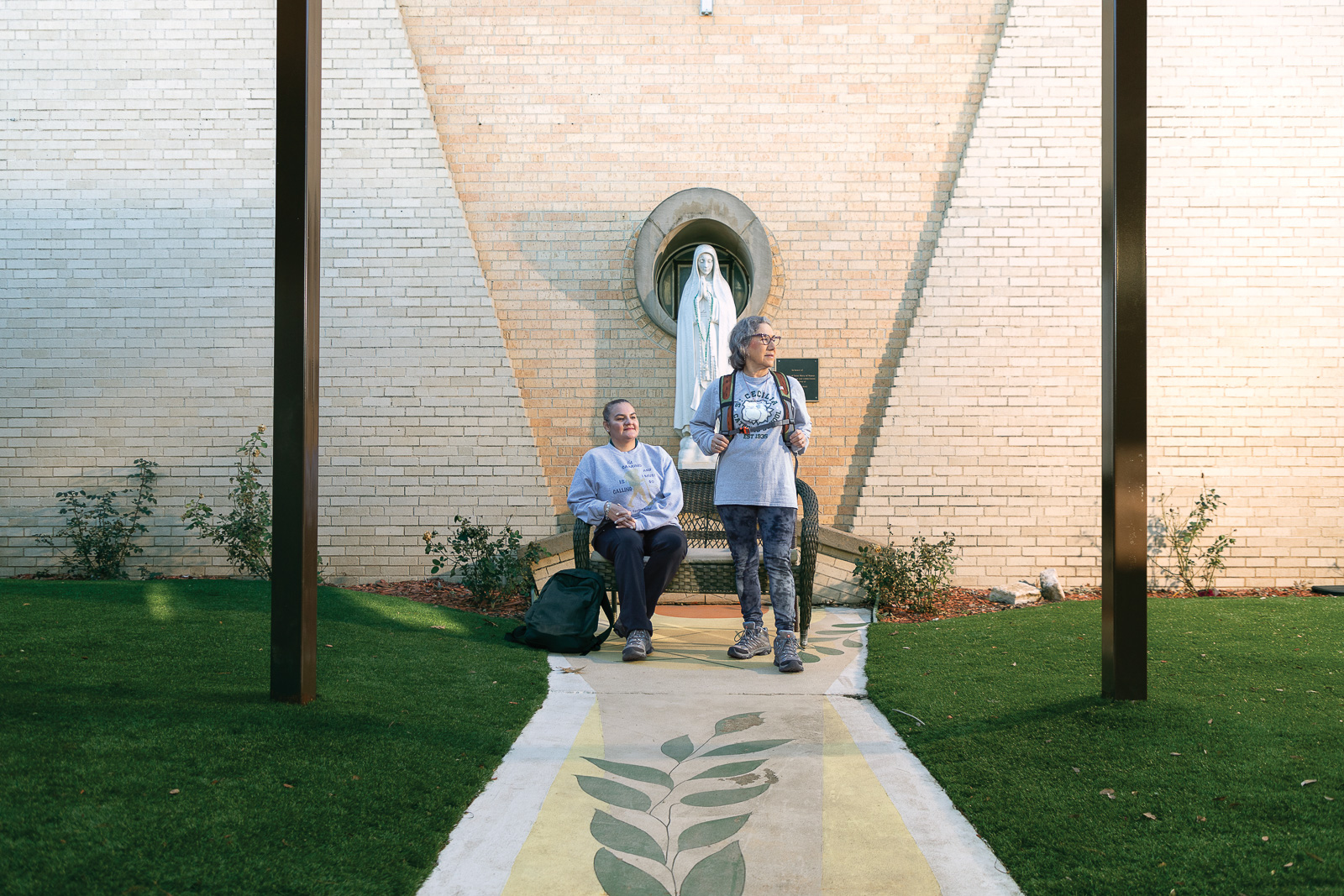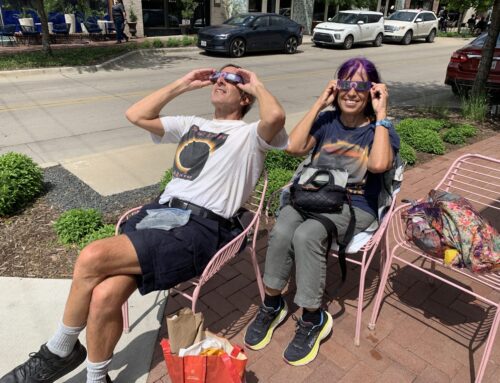For 100 kilometers they walked. They did not have a map; instead they followed scalloped seashells — smaller than their palms and stuck in buildings and fences at random intervals — as a guide. Sometimes they talked, sometimes they were silent.
Each day, they prayed.
And when Lydia Torrez and Estela Valdez reached Santiago de Compostela, the burial site of St. James the apostle in Galicia, Spain, they knew they’d been permanently marked by their pilgrimage.
“Everything looked more alive. Everything looked more vivid. But the reality is, were the greens really brighter, or was it the lens that I was looking through?” says Torrez, president of the St. Cecilia School. “I think I was the one who had been transformed.”
Torrez and Valdez’s friendship grew from working together at St. Cecilia, where Valdez is the principal. In 2021, the women hiked 100 kilometers — averaging 13 miles a day — of the El Camino de Santiago in Spain during spring break as a fundraiser for the school.
They will return this March, once again trekking 100 kilometers of the pilgrimage traveled by hundreds of thousands of Christians a year. This time, Torrez and Valdez are leading a group of 18 North Texas women on the hike, which will begin in Vigo, Spain and take seven days to complete.
Torrez says she is returning to the Camino after feeling “moved by the Spirit.”
“It’s just something that you have to feel. This past summer, we both agreed that we were going to do it again,” Torrez says. “That sense of prayer that we experienced on El Camino, we brought it back home, and that was the whole idea. It was just an exciting time. When I tell you we prepared, I mean, we prepared for months.”
The women are in their 50s and 60s, and Valdez runs marathons. She has been able to strategize the women’s training schedules leading up to each hike.
Valdez says a training plan is as much physical as it is mental. She is preparing each woman who registered for this year’s hike to “feel their body” and walk rigorous but doable distances day after day.
“Once you mentally prepare for it, I feel like everybody can do it,” Valdez says.
Valdez is also leading workshops about how to pack, what kinds of shoes to wear and how to maintain nutrients while embarking on an extremely physical journey.
That preparation was key to the women’s success on their first trip, they say.
Early spring is not a busy time of year for the Camino, and the groups they did encounter on their first journey were often young students or recent graduates. Those groups generally outpaced Torrez and Valdez, who would then find them “later along the way” burnt out and sporting “humongous blisters.”
“Somebody had to come pick them up. We had paced ourselves, we had prepared ourselves, we had done our homework, you know. We knew how to take care of our feet,” Torrez says. “You can call that wisdom, if you want … We knew this was going to be a journey that needed us to be as ready as we can be, while not knowing what the road held for us.”
While the El Camino totals thousands of kilometers over its various paths — which stretch into France and Portugal — hikers are required to travel the final 100 kilometers to the Santiago de Compostela cathedral to receive a pilgrim certificate. On their first journey, the women began on the French side of Galicia, where all paths lead.
Their walk took them through forests, farmland, rivers, mountains and ancient Roman ruins.
And, they weathered thunderstorms, snowflakes and days so hot they were stripping off their jackets and socks. They slept on farms and in small hostels full of other pilgrims making the same march.
“We saw it all,” says Torrez.
In 2021, they carried prayer requests from friends, students and members of the St. Cecilia community. Torrez and Valdez prayed over each request every day of their journey and then presented the prayers to the Cathedral of Santiago de Compostela.
Each day, the women posted videos of their experience to Facebook and Instagram so donors and students could follow along. Some people donated money directly to the school in honor of the women’s pilgrimage, while others sponsored $10 or $25 for each kilometer walked.
In the end, Torrez and Valdez raised $40,000 that went towards building a prayer garden in the school courtyard. The garden is a way of bringing the spiritual experience of the Camino back to the school, Torrez says.
This year, they aim to raise $70,000 to benefit student programming, student tuition assistance, teacher supplies and teacher professional development.
And while they have a better expectation of what the path might hold than they did in 2021, they know there will still be opportunities to learn and grow in their faith and their friendship along the way.
“I think the biggest takeaway was figuring out that you’re not alone … You have to look for these signs on the walls and on the streets, a seashell the size of your palm, so if you miss it you are lost,” Valdez says. “I was never afraid. I never felt lost. That makes me realize, there’s a God, and he’s guiding us.”






